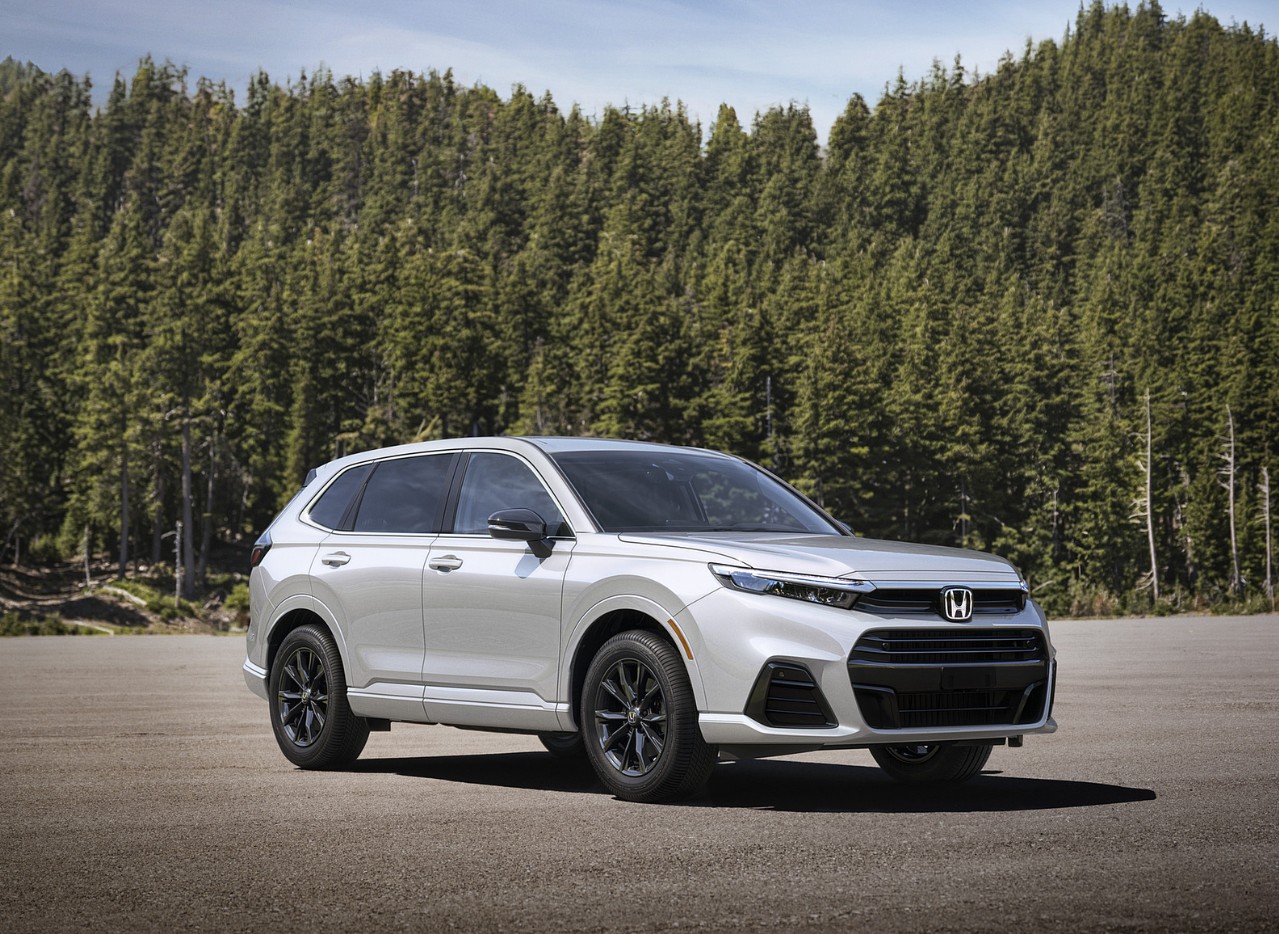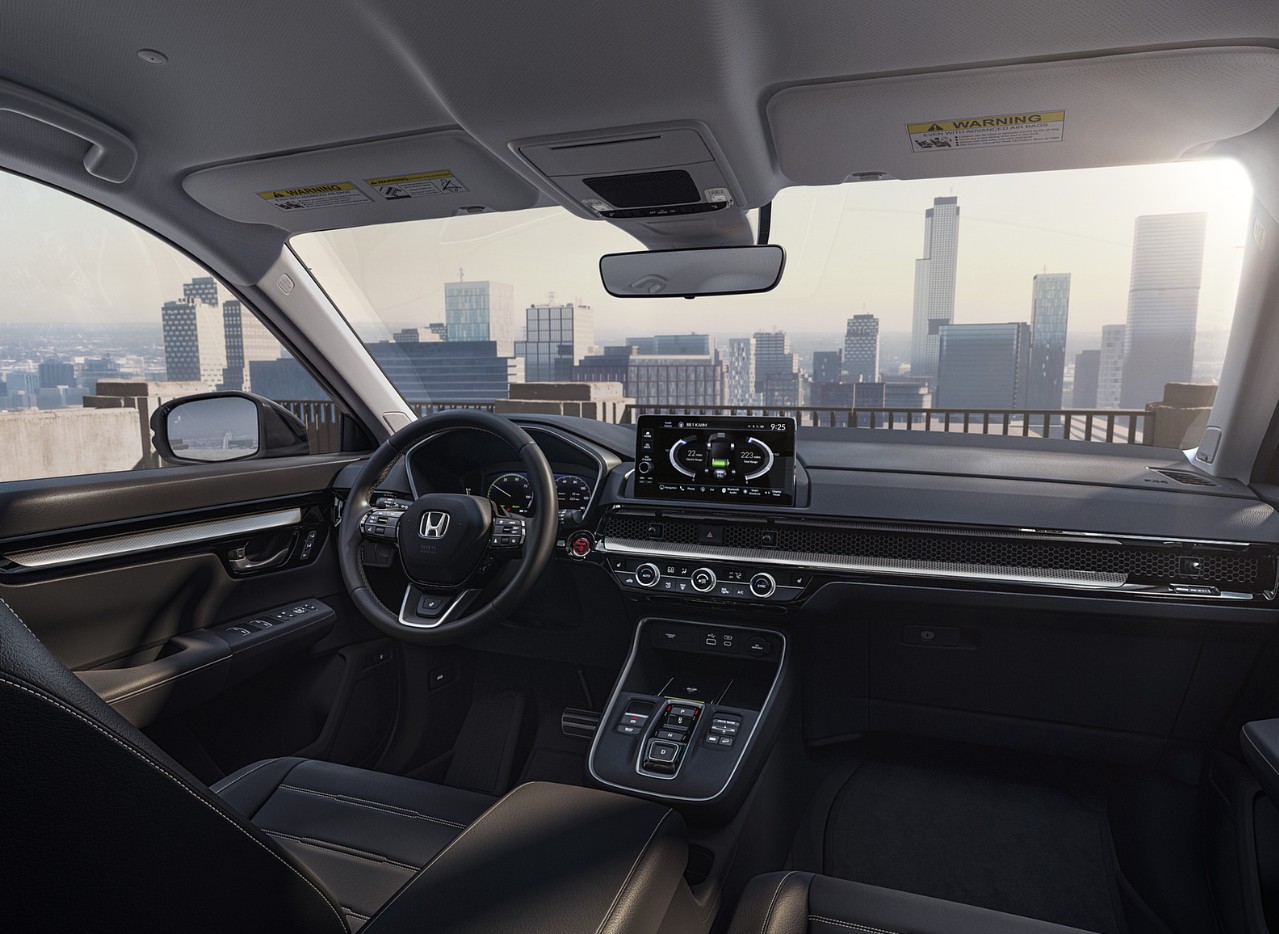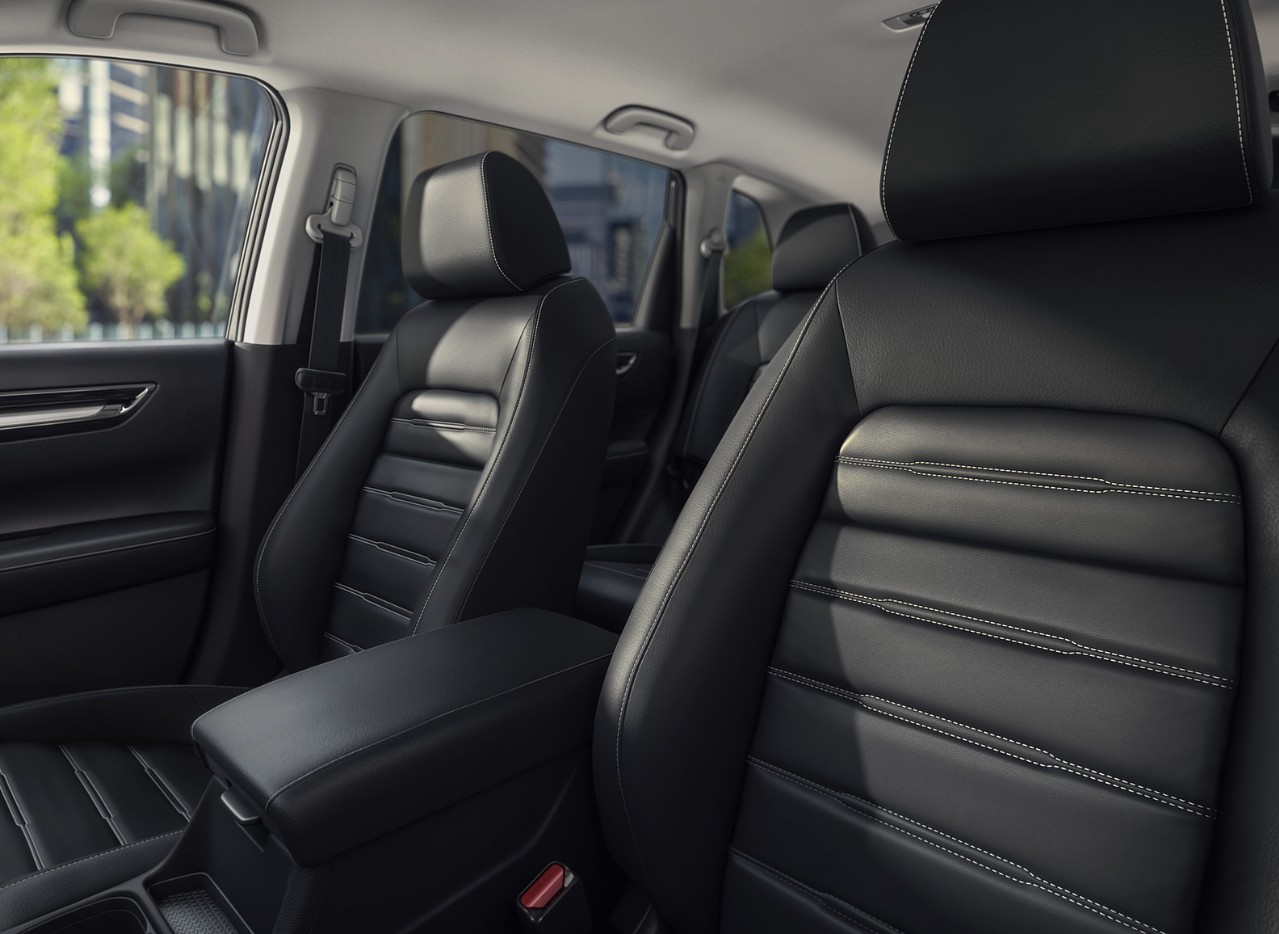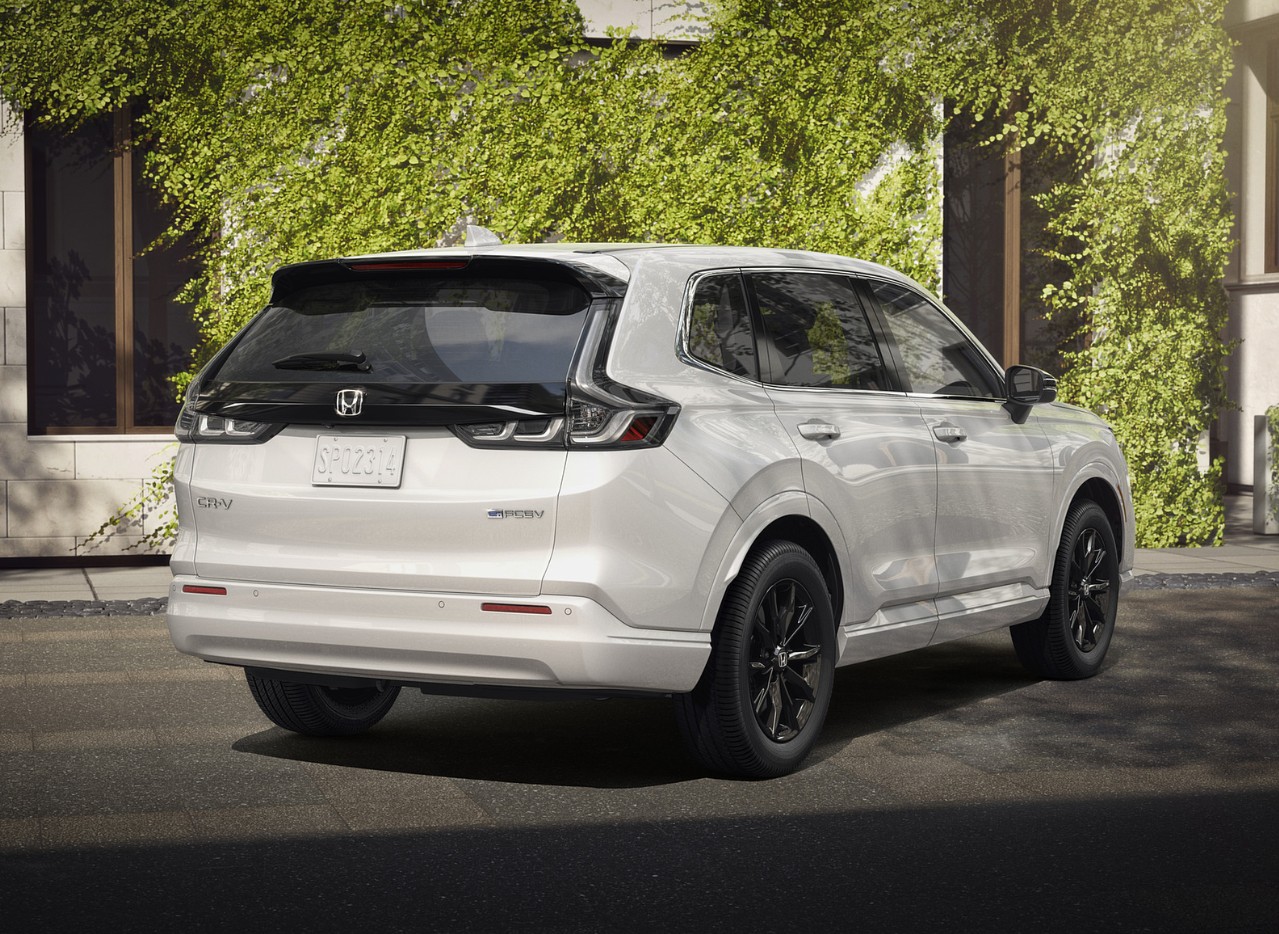2027 Honda CR-V eFCEV Redesign, Specs, Price – A revolutionary departure from previous CR-V models, the 2027 eFCEV is Honda’s first small SUV to use hydrogen fuel cell technology. The eFCEV combines a cutting-edge powertrain with the practicality that regular CR-V owners have come to expect from the brand, building on the heavily reworked sixth-generation CR-V base. The vehicle’s structural modifications allow it to carry a plug-in battery system and hydrogen fuel cell stack, while preserving its practical five-passenger configuration and ample cargo area. 2027 Honda CR-V eFCEV Redesign
2027 Honda CR-V eFCEV Redesign and Update Plan
Exterior & Interior
Distinctive futuristic details that subtly demonstrate development rather than shout “concept car” distinguish the 2027 CR-V eFCEV from the competition. Unique to the eFCEV model, the LED lighting signature has been modified to create a continuous light bar that spans the entire vehicle, from nose to tail. The electric vehicle’s range is maximized by creating a more slippery profile with a sloping bonnet, contoured side panels, and wind-cheating wheel designs. A new proximity-sensing unlock system is integrated into the body-color door handles, and the wheels are 19-inch aerodynamically tuned alloys with blue-accented inserts.
A molded-in spoiler and upgraded lighting units with a crystalline look adorn the redesigned tailgate, which alludes to the transparency of hydrogen technology. To further emphasize the zero-emissions claim, the bumper features an innovative design with diffuser-style inserts and no longer has exhaust openings. To match the model’s tech-savvy character, we offer a wide range of colors, including Lunar Silver Hydrogen, Crystal Sky Pearl, and Obsidian Blue Glow, among others. Preserving the CR-V’s fundamental utility DNA, functional roof rails and a powered hands-free liftgate are maintained as standard features.
Within, the eFCEV cabin provides a serene, high-end environment that prioritizes sustainability and digitization. Integrated into Honda’s newest Connect OS, a massive 12.3-inch touchscreen takes center stage in the center stack. It offers cloud-based navigation, hydrogen station locators, and real-time energy usage statistics, among other features. The driver can adjust the digital instrument cluster to their liking, and it displays information such as fuel cell load, hydrogen levels, battery life, and efficiency ratings. Honda is making strides toward more environmentally friendly interiors with its next-generation vehicles by using materials like bio-resin trim panels, natural fiber headliners, and recycled suede upholstery.
Compared to its gasoline and hybrid counterparts, the CR-V eFCEV takes on a more daring exterior style for 2027. To emphasize the eFCEV’s superior zero-emissions characteristics, Honda has equipped it with a distinctive closed-off front grille framed by smaller LED headlights. There are active grille shutters that help with airflow and cooling, as well as flush badging and enhanced aerodynamic sculpting on the front fascia. A distinctive feature of the eFCEV is its reworked lower bumper, which highlights its alternate power source with blue FCEV-specific badging and silver accents.
In order to accommodate the hydrogen tanks safely between the axles, this version also features an updated rear subframe and underbody parts. The eFCEV uses cutting-edge composite materials to keep weight down despite its complicated drivetrain, and Honda’s EV-friendly modular chassis makes fuel cell integration scalable. The fuel cell stack is installed in the engine bay to make the most efficient use of space, while the high-voltage battery is located beneath the floor. The CR-V is now both familiar and noticeably different on the inside thanks to these upgrades.
2027 Honda CR-V eFCEV Specs
Engine & Performance
The next-gen fuel cell system, which was developed in collaboration with General Motors and optimized for use in mid-size vehicles, powers the 2027 CR-V eFCEV. A 33% smaller and 66% more robust fuel cell stack with a far quicker cold-start capability than earlier versions is now available. It drives an electric motor with a torque of 229 lb-ft and a horsepower rating of around 174, allowing for linear acceleration. In addition to the fuel cell, the plug-in hybrid battery provides supplementary power under load and a restricted all-electric mode suitable for shorter travels.
The chassis stores two hydrogen tanks that power the engine; a 700-bar station can refill the tanks in around five minutes. Estimated overall range with the battery system is more than 300 miles, combining long-distance capabilities with everyday convenience. according to its 29-mile battery-only range when using plug-in charging, the CR-V eFCEV is more versatile in regions where hydrogen stations are uncommon, according to Honda’s dual-power-source strategy. Complete battery charging at 240V takes less than 2.5 hours with a Level 2 port.
The CR-V’s driving qualities are unchanged, but the EV torque curve and quieter interior make a big difference. To keep the ride comfortable and responsive while the hydrogen tanks add weight, Honda adjusted the suspension. You can control the level of regenerative braking with the paddles on the steering wheel, so you can drive more smoothly with just one pedal. Rather than prioritizing raw performance, the eFCEV prioritizes efficiency and optimizing range with its sole front-wheel drive option. 2027 Honda CR-V eFCEV Redesign
2027 Honda CR-V eFCEV Fuel Economy
Based on preliminary tests, the fuel efficiency for the 2027 Honda CR-V eFCEV is estimated to be around 64 MPGe combined. The plug-in hybrid battery makes it possible to maximize efficiency on urban travels by eliminating the need to use hydrogen. Thanks to its fast refilling capability and high energy density, the fuel cell enables long-distance travel. By utilizing the current hydrogen infrastructure, the dual-power system hopes to lower the overall energy cost per mile.
2027 Honda CR-V eFCEV Safety Features
Included in the most recent version of Honda’s Sensing 360 suite is a junction collision avoidance system, blind spot steering assist, and front cross-traffic alert, all of which are included on the 2027 CR-V eFCEV. Better detection of moving and stationary objects in any lighting condition is now possible thanks to a novel sensor fusion system that integrates lidar, cameras, and radar. Every single trim level comes standard with AI-powered safety features including Adaptive Cruise Control, Lane Keeping Assist, and Traffic Sign Recognition.
An innovative Hydrogen Safety Monitor is standard on all eFCEVs manufactured by Honda. It continuously checks the fuel cell and tank system for any signs of leaks or unusual pressure. It has automated venting controls and fail-safe shutdown features that activate when something goes wrong with the system. The vehicle’s structure has been fortified with high-strength steel integration around the floorpan and rear subframe, as well as crash-safe zones for the hydrogen tank. Lower center of gravity and improved rollover resistance are achieved by positioning the tanks between the axles.
For your passive protection, there are 10 airbags, including those in the front, center, and knees. Unlike other compact SUVs, this one comes standard with side airbags for the rear passengers. Automatic SOS calls, warning light activation, and door unlocking are all part of Honda’s emergency response system in the event of an accident. The eFCEV comes with the HondaLink app, which allows users to check their fuel cell status, tire pressure, and other vitals from the convenience of their smartphone. The app also comes with pre-conditioning and security alerts. Integrating safety at every layer of design is Honda’s commitment, and our full-circle method strengthens it. 2027 Honda CR-V eFCEV Redesign
2027 Honda CR-V eFCEV Release Date & Price
With a starting price of about $48,000, the 2027 CR-V eFCEV will be competitive in the new market for hydrogen SUVs. Only certain areas of the United States, most notably California, with active hydrogen refueling networks will be able to purchase it. The Touring FCEV is the entry-level model, while the Elite adds a solar glass panoramic roof, ventilated leather seats, premium music, a head-up display, and other amenities. As a part of their launch campaign, Honda is offering a hydrogen fuel credit and three years of free maintenance.
In June of 2027, pre-orders will be available, and Honda has stated that the release will commence in the third quarter of 2027. Customers in hydrogen-friendly regions will be the first to get delivery, followed by fleet and early adopter customers. The vehicle will be assembled in Honda’s Performance Manufacturing Center in Marysville, Ohio, which is known for its expertise in high-tech, low-volume production. The implementation will be supported by a joint U.S.-Japan plan, and its global availability will be limited by infrastructural and regulatory circumstances.
Conclusion
By combining the practicality of the CR-V with the cutting-edge technology of hydrogen fuel cells, the 2027 Honda CR-V eFCEV reimagines the small SUV. With its advanced design, innovative dual-energy drivetrain, and comprehensive safety features, the eFCEV goes beyond being a mere advancement—it signifies a giant leap towards a greener, more adaptable future in the automobile industry.
Note: This article post’s information is based on pre-release content that was available at the time it was published. You should contact your local dealership or consult official sources for the most recent information.






